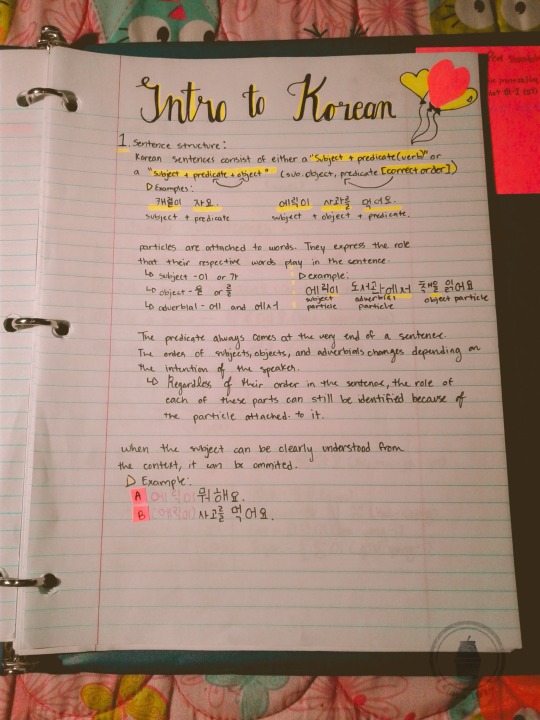
🇭🇰daily korean facts🇭🇰 on Twitter " "Correct Sounds for the Classics
The greatest danger for most of us is not that our aim is too high and we miss it, but that is it too low and we reach it. Namureul simneunde gajang joatdeon ttaeneun isipnyeon jeonieotda. Du beonjjaero joeun ttaeneun jigeumida. 나무를 심는데 가장 좋았던 때는 20년 전이었다. 두 번째로 좋은 때는 지금이다.

Short Quoting Forms Live Class Abridged Learn Korean with GO! Billy
Looking for inspiration from some Korean Proverbs? You've come to the right place! Do you want to take these along with you? We put the 20 most famous proverbs from this page and their explanations in a downloadable PDF that you can take on the go: Get Korean Proverbs Free PDF Contents [ hide] 1 "Proverb" in Korean 2 Korean Proverbs 2.1 1.

Korean Chicken Words Korean Words Learning, Korean Language Learning
Learn Korean with our systematic curriculum, professional teachers, over 1,500 bite-sized online lessons and beautiful books shipped worldwide. Join 1,000,000+ learners using TalkToMeInKorean today.

Happy Hangul Day! Language on the Move has a post about the invention
Indirect quotation is very useful and common to use between native Koreans. So, I am sure that you want to learn this. Let's study with some examples below. Grammar rule is "V or Adj+고+ (verb:들었다, 말했다)". In English, when you use "That", you need to use this grammar in Korean. He went to the church/그가 교회에 갔다.

다고/라고 Quoting in Korean Kdrama Scene Breakdown '사이코지만 괜찮아 It's Okay
2 Punctuation marks in Korean 2.1 Periods (.) 2.1.1 Period in Korean 2.2 Commas (,) 2.2.1 Comma in Korean 2.3 Question mark (?) 2.3.1 Question mark in Korean 2.4 Exclamation mark (!) 2.4.1 Exclamation mark in Korean 2.5 Double quotation marks (" ") 2.5.1 Double quotation mark in Korean 2.6 Single quotation marks (' ')
get Yonsei korean Direct quotations in Korean 라고 했다, 하고 했다 = said
This can create some confusion. When the original speaker of the quoted sentence asks for an object to be given to him/her (or for an action to be done for him/her) using ~주다 (or ~아/어 주다), 주다 should be replaced by the verb 달다. 달다 is a verb, but you don't really need to memorize it as a word in your vocabulary studies.

The Korean Media Aesthetic of ‘Oba’ — Or, The Cultural Politics of the
Here are 20 Korean sayings that will inspire you today, wherever you are in the world. 1. 원숭이도 나무에서 떨어진다 Pronunciation: weon-sung-i-do na-mu-eh-seo ddeo-leo-jin-da Literal translation: Even monkeys fall from trees sometimes. Meaning: If even the best tree-climbers can fall off a tree, then surely anyone can mess up.

자고 하다 grammar = suggested, told quoting one's suggestion or advice
1. "You're amazing, but you're too dangerous." 2. "It will be in an instant, my friend." 3. "There's an Indian proverb that goes, 'Sometimes, the wrong train takes you to the right station.'" 4. "Don't look for death. Death will find you." 5. "Bad memories stay longer in my heart." 6. "There are moments when you suddenly realize something." 7.

How To Study Korean Quoting Complete Howto Wikies
Introduction Quoting with Verbs: ~ㄴ/는다고 Quoting with Adjectives: ~다고 Quoting with 이다: ~ (이)라고 Other Uses of ~ㄴ/는다고 Asking Questions with Quoted Sentences Using Quoted Sentences with ~는 것 Vocabulary Click on the English word to see information and examples of that word in use.

Korean Grammar in One Minute Quoting 1 (V/Adj + ㄴ/는다고) YouTube
5 Styles of quoting. As I mentioned before, there are 5 basic quoting methods. 라고 (direct quotes) 다고/라고 (indirect quotes; 라고 is used with the copula "이다") 냐고 (quoted questions) 자고 (quoted suggestions) 라고 (quoted commands) In this post I will cover the last 3.

How To Study Korean Quoting Complete Howto Wikies
When quoting these words as commands, you must attach ~ (으) 라고 to the stem of the verb. ~으라고 is added to the stem of a verb ending in a consonant (except ㄹ), and ~라고 is added to the stem of a verb ending in a vowel (and where the final consonant isㄹ). Notice that the first part of the addition is ~ (으) and not ~아/어.

How to study Korean Lesson 55 Quoting 주다 with 아/어 달라고 Study
한국에 간다는 사람 - A person who is going to Korea. 나는 지금 연락 받았어서 그녀가 인도에 도착했다는 것 알아요. - I just got the call so I know she has arrived in India. Verb + 단 + Noun is the short form. 5. Verb + (으)라고 하다. You use Verb + (으)라고 하다 when you are quoting an imperative statement.

Live Korean Class 📚 [Intermediate] Short Quoting Forms 대, (이)래, 냬, (으
directly quoting in Korean. This is when you want to quote exactly what someone told you/what you heard, with no alteration to their words. You can say their name, their words, then follow that with -라고 했다 which indicates that the person 'said this'. The verb 했다 can be changed to other similar verbs like 말하다.

Korean Language Bank 고 있다 Korean language, Korean language learning
South Korea passes law banning dog meat trade. 2 hrs ago. Asia. Chinese satellite triggers missile alert in Taiwan. 3 hrs ago. Asia. Why the Taiwan election matters. 4 hrs ago. Asia. More. 6 hrs ago.

How To Study Korean Quoting Complete Howto Wikies
There are two ways to quote someone in English: Literally: Did you say, "Go home?" Non-literally: Did you tell me to go home? Notice how in English we just use the words directly, and put quote marks around them for literal quotes, and change the verb to the infinitive form (to X) for non-literal quotes. Korean is the same way.

Korean actor Ahn Jaehyun calls it quits with wife Goo Hyesun Nestia
Direct quoting in any language is when we want to quote something word for word. This is done commonly in English. For example James said "I don't want to go home now" This should be a simple idea and it is equally simple in Korean. We take the quoted sentence and attach "라고 + (하다 / or another quoting verb)".